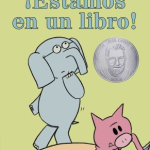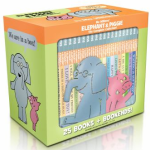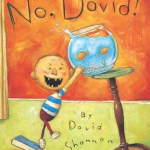CultureGrams
CultureGrams
Unique, concise, and reliable cultural information, multimedia, and vital statistics on the countries of the world, U.S. states, and Canadian provinces.*
View a 15-minute CultureGrams demo video
No comments
Unique, concise, and reliable cultural information, multimedia, and vital statistics on the countries of the world, U.S. states, and Canadian provinces.*
View a 15-minute CultureGrams demo video
No commentsA collection of engaging resources about authors, books, and reading. Identify exceptional books that reflect diverse cultural experiences, interests, and ability levels.*
View a 3-minute introductory video
View a 20-minute how-to video
No commentsAccess in-depth financial information, research, commentary, and analysis for stocks.
View the how-to user guide
No commentsFree or discounted passes to local museum and cultural institutions. Learn more about how to use this service by reading this PDF document.
No commentsLearn more about any subject, whether you are a child, teen, or adult.
View a 3-minute introductory video
No commentsLearn a new language. Choose from 71 languages, including Spanish, French, Arabic, Japanese, and English.
View a 6-minute introductory video
View an e-Brochure on how to get started
Ver un folleto electronic sobre como empezar
No comments¡Déjame oírte decir C-a-b-a-l-l-o ! Vamos a aplaudirlo.
Cómo las palabras se pueden juntar para comunicar ideas e información conduce a la comprensión; hablar con los niños es especialmente bueno para ayudarlos a pensar. Asegúrese de que su hijo pueda hablar con usted, no solo escucharlo hablar. Responda a lo que dice su hijo y siga su ejemplo. Responda las preguntas de su hijo de la manera más completa posible. Sus explicaciones ayudan a su hijo a aprender más sobre el mundo.
Si su hijo no está hablando, hágale preguntas, espere a que reaccione con un gesto o balbuceando, y luego hágale comentarios, como “Sí, los dos conejitos se están persiguiendo”. Pídale a su niño que le cuente algo que le haya sucedido hoy; Pida más detalles para que su hijo pueda ampliar la historia. Haga preguntas con más de un “sí” o un “no” como respuesta. Esto anima a su hijo a pensar en posibles soluciones ya hacer más preguntas. Aumenta las habilidades de comprensión.
Usa palabras nuevas. Los buenos lectores tienen un amplio vocabulario. Saber muchas palabras ayuda a los niños a comprender mejor lo que leen. Comience temprano, incluso antes de que sus hijos aprendan a hablar. Turnarse. Los niños están empezando a aprender a tener una conversación. Necesita hacer preguntas y escuchar las respuestas de sus hijos. Haz conexiones. Ayude a los niños a recordar eventos pasados y conéctelos con actividades actuales y futuras. Ayuda a los niños a comprender que el lenguaje puede representar eventos que no están sucediendo ahora.
Únete a nuestro programa de lectura de verano abierto a todas las edades. ¡Únete!
¿Conoces nuestro Dial-A-Story? Llame y escuche una historia mientras viaja, espera o camina. Historias disponibles en inglés y español. 530-298-9990.
Libros recomendados:
 ¡Estamos en un libro! por Mo Willems
¡Estamos en un libro! por Mo Willems
Esta entrada fue escrita por la especialista en Alfabetización Familiar de la Biblioteca del Condado de Yolo, Letty Flores. ¡Gracias, Lety!
No commentsLet me hear you say C-O-W! Let’s clap it.
How words can be put together to communicate ideas and information leads to comprehension; talking with children is especially good at helping them think. Ensure your child can speak with you, not just listen to you talk. Respond to what your child says and follow their lead. Answer your child’s questions as completely as possible. Your explanations help your child learn more about the world.
If your child isn’t talking, ask questions, wait for them to react with a gesture or by babbling, and then give feedback, such as, “Yes, the two bunnies are chasing each other.” Ask your toddler to tell you about something that happened to them today; ask for more details so your child can expand on the story. Ask questions with more than a “yes” or “no” answer. This encourages your child to think about possible solutions and to ask more questions. It increases comprehension skills.
Use new words. Good readers have a large vocabulary. Knowing lots of words helps children better understand what they read. Begin early, even before your children learn to talk. Take turns. Children are just beginning to learn how to have a conversation. You need to ask questions and listen to your children’s responses. Make connections. Help children remember past events and connect them to current and future activities. It helps children understand that language can represent events that are not happening now.
Join our summer reading program open to all ages. Sign up!
Do you know about our Dial-A-Story? Call and listen to a story while on the go, waiting, or walking. Stories are available in English and Spanish. 530-298-9990.
Recommended books:

We are in a Book by Mo Willems

This blog entry was written by Yolo County Library’s Family Literacy specialist, Letty Flores. Thank you, Letty!
No comments530-666-8005
Library Friends and Foundation
We acknowledge that we are on the traditional territory and homelands of the Yocha Dehe Wintun Nation. For more information, please go to: www.yochadehe.gov
.Strategic Priorities, 2022-2027
Mission, Vision, History, and County Librarian
Loan periods, Limits, and Fees